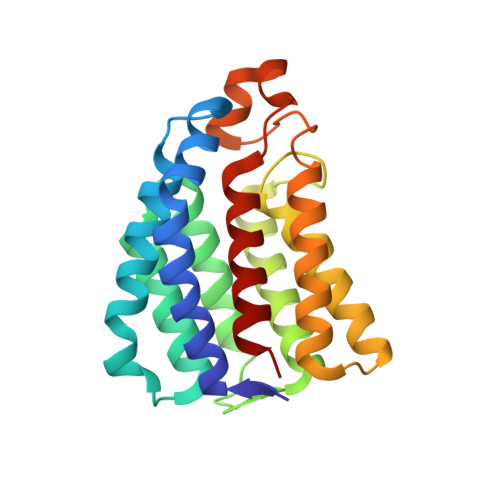Crystal Structure of the Nucleotide-Binding Subunit Dhal of the Escherichia Coli Dihydroxyacetone Kinase.
Oberholzer, A.E., Schneider, P., Baumann, U., Erni, B.(2006) J Mol Biol 359: 539
- PubMed: 16647083
- DOI: https://doi.org/10.1016/j.jmb.2006.03.057
- Primary Citation of Related Structures:
2BTD - PubMed Abstract:
Dihydroxyacetone (Dha) kinases are a family of sequence-related enzymes that utilize either ATP or phosphoenolpyruvate (PEP) as source of high energy phosphate. The PEP-dependent Dha kinase of Escherichia coli consists of three subunits. DhaK and DhaL are homologous to the Dha and nucleotide-binding domains of the ATP-dependent kinase of Citrobacter freundii. The DhaM subunit is a multiphosphorylprotein of the PEP:sugar phosphotransferase system (PTS). DhaL contains a tightly bound ADP as coenzyme that gets transiently phosphorylated in the double displacement of phosphate between DhaM and Dha. Here we report the 2.6A crystal structure of the E.coli DhaL subunit. DhaL folds into an eight-helix barrel of regular up-down topology with a hydrophobic core made up of eight interlocked aromatic residues and a molecule of ADP bound at the narrower end of the barrel. The alpha and beta phosphates of ADP are complexed by two Mg2+ and by a hydrogen bond to the imidazole ring of an invariant histidine. The Mg ions in turn are coordinated by three gamma-carboxyl groups of invariant aspartate residues. Water molecules complete the octahedral coordination sphere. The nucleotide is capped by an alpha-helical segment connecting helices 7 and 8 of the barrel. DhaL and the nucleotide-binding domain of the C.freundii kinase assume the same fold but display strongly different surface potentials. The latter observation and biochemical data indicate that the domains of the C.freundii Dha kinase constitute one cooperative unit and are not randomly interacting and independent like the subunits of the E.coli enzyme.
Organizational Affiliation:
Departement of Chemistry und Biochemistry, University of Berne, Freiestrasse 3, CH-3012 Bern, Switzerland.
















